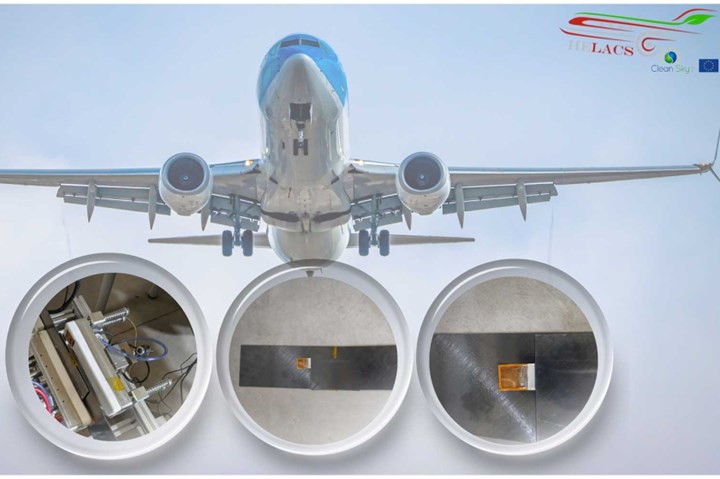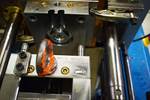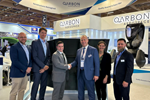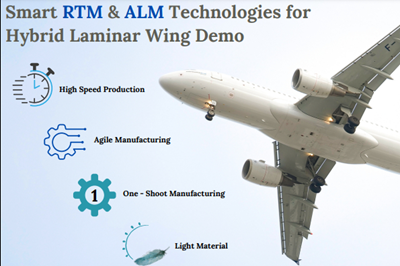Aitiip Technology Center reports dismantling of thermoplastic parts using resistance welding
Clean Sky 2 HELACS project aims to enable improved recycling of composite components at aircraft end of life.
Share
Read Next

Photo Credit: Clean Sky 2 HELACS, Aitiip
The Aitiip Technology Center (Zaragoza, Spain) reports that the aeronautical industry is depositing more than 40,000 tons of end-of-life (EOL) composite material waste in landfills. HELACS (Holistic processes for the cost-effective and sustainable management of End of Life of Aircraft Composite Structures) is a Horizon 2020 – Clean Sky 2 project led by Aitiip, aimed to develop and demonstrate a comprehensive methodology and novel robotic platform to disassemble, recycle and reuse large composite components from EOL aircraft.
Scheduled to be completed in December 2023, HELACS has released initial findings for welding and disassembling thermoplastic composites using induction welding and ultrasonic welding. Most recently, Aitiip researcher Alejandro Marqués reports satisfactory results for welding and disassembly using resistance welding in an article published by interempresas.net.
The HELACS project consortium includes Gen 2 Carbon (Coseley, U.K.), a specialist in the recovery of carbon fiber from recycled parts using pyrolysis and Centexbel’s technology center in Kortrijk, Belgium, for the manufacture of composites from recycled materials. The final partner is Plata (Aragon, Spain), an industrial aviation hub which includes Tarmac Aerosave, a joint venture between Airbus and Safran, that has recycled more than 300 aircraft since 2007, including 75% of the A340s recycled to date. HELACS reports the company recently began recycling its first Airbus A380. According to a September 2002 article in CW’s predecessor High Performance Composites magazine, the A380 contains 30 metric tons of composites equating to 16% of its airframe weight.
HELACS project partners are working to develop a complete cycle for aircraft recycling that comprises dismantling thermoset or thermoplastic composite parts, pyrolysis to recover the reinforcing carbon fibers and reprocessing these fibers to manufacture new parts using a thermoplastic matrix. Research axes include:
- High-pressure waterjet cutting of thermoset composite components into smaller pieces for pyrolysis,
- Increasing the recycling capacity of aircraft parts by 40%,
- Development of a robot mounted onto an AGV to assist is planeside disassembly.
Resistance welding for disassembly
Anticipating the growing implementation of thermoplastic composites in aircraft, Aitiip is investigating the concept of thermoplastic welding and unwelding, which would enable the dismantling and reuse of welded parts without the need for postprocessing.
As described in the interempresas.net article by Marqués, the resistance welding process is achieved by heating two thermoplastic composite surfaces to be welded to the melt temperature of their thermoplastic matrix while applying pressure. After reaching the welding process temperature, the contacting surfaces are allowed to cool in a controlled process while pressure is maintained so that the welded joint is formed.
To reach the process temperature, Aitiip positions a 65-micrometer-thick metal mesh resistive element (electrically insulated from the laminates by fiberglass) between the thermoplastic composite surfaces to be joined. An electric current applied to this resistive element creates heating of the mesh through the Joule effect. The mesh remains embedded between the two composite pieces in the welded joint.
The welded surfaces are subsequently separated by returning the joint to the matrix material’s process temperature — again, by applying electrical current to the resistive element in the joint — but instead of applying pressure to join the two parts, separation forces are applied for disassembly. Using this approach, Aitiip reports that it has obtained satisfactory results, achieving several welding-separation cycles between tested plates of carbon fiber-reinforced thermoplastic composites. Aitiip reports the process still requires further optimization to minimize the effect of these cycles on the parts.
For more information, contact HELACS project manager ivan.monzon@aitiip.com
Related Content
Materials & Processes: Fabrication methods
There are numerous methods for fabricating composite components. Selection of a method for a particular part, therefore, will depend on the materials, the part design and end-use or application. Here's a guide to selection.
Read MoreThe state of recycled carbon fiber
As the need for carbon fiber rises, can recycling fill the gap?
Read MoreMaterials & Processes: Resin matrices for composites
The matrix binds the fiber reinforcement, gives the composite component its shape and determines its surface quality. A composite matrix may be a polymer, ceramic, metal or carbon. Here’s a guide to selection.
Read MorePlant tour: Joby Aviation, Marina, Calif., U.S.
As the advanced air mobility market begins to take shape, market leader Joby Aviation works to industrialize composites manufacturing for its first-generation, composites-intensive, all-electric air taxi.
Read MoreRead Next
INN-PAEK project to develop 100% recyclable, lightweight thermoplastic flange wheels for future aircraft
The AITIIP Technology Center leads this research with partner Liebherr Group to develop a technology by June 2023 that contributes to more sustainable, eco-friendly production systems.
Read MoreSupernal, Qarbon Aerospace partner to mature induction welding technologies for eVTOL scale-up
Major aerospace supplier commits resources to scale rate-enabling manufacturing processes for Supernal’s SA-A1 CFRTP component assembly.
Read MoreAITIIP is developing innovative RTM tooling, ALM system for sustainable aircraft wing
HERON project methodology will be used to manufacture a composite aircraft wing demonstrator, which will be suitable to study the wing’s technical parameters and kinematic and aerodynamic properties.
Read More


























